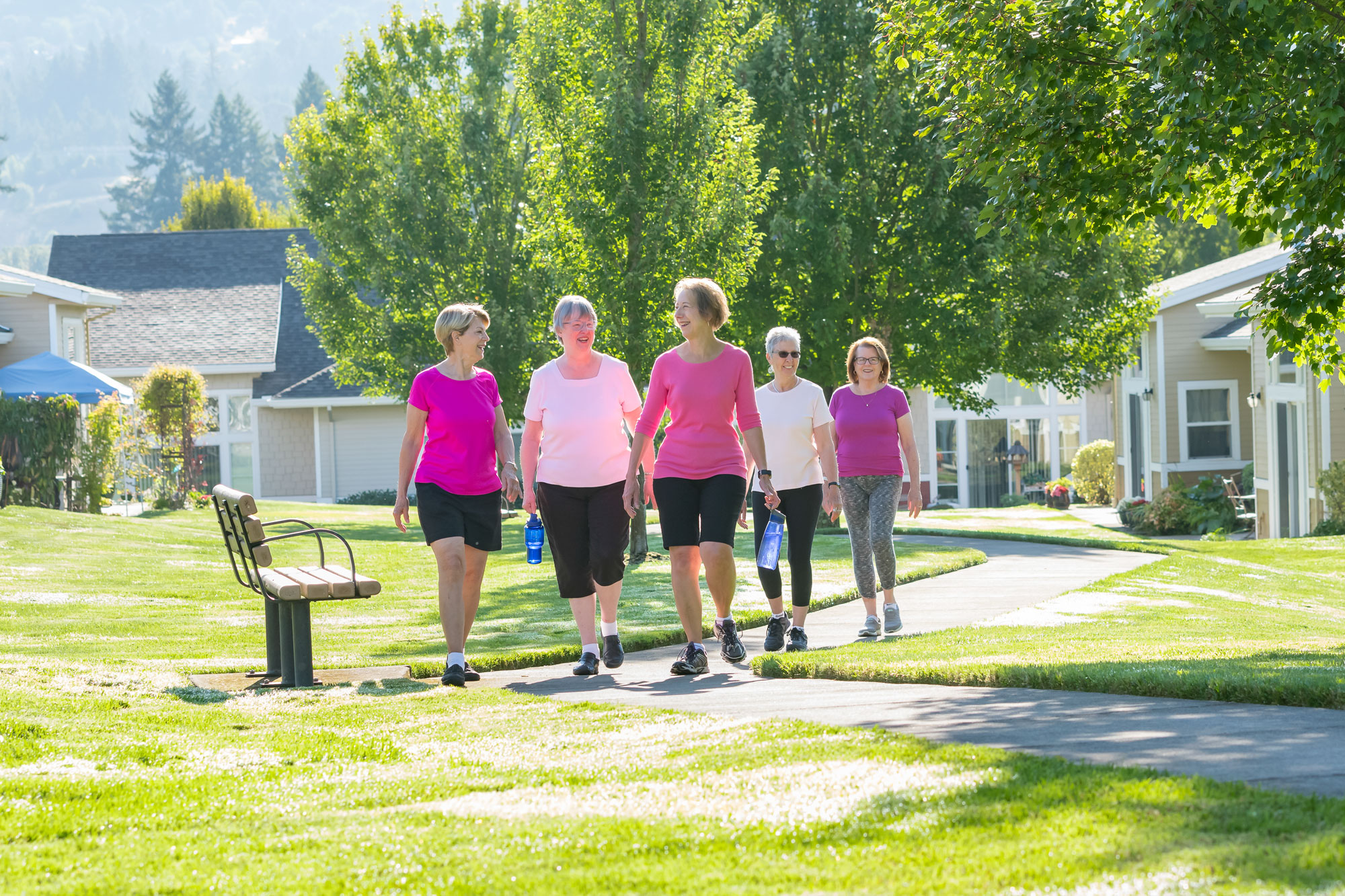Monday, April 9, 2018
Days have lengthened and the painted colors on our Friendsview landscape is a welcome sight! Resident gardeners dig in the dirt at the Friendsview Gardens, and folks are again walking on the George Fox University track – always a safe place to walk.
Our much-anticipated neighbors at University Village are now settled in their new lodging. Now that spring has sprung and moving boxes are flattened and recycled, new residents eagerly explore our campus, George Fox, and the Newberg community. The almost eerie quiet with no construction noise or moving trucks still surprises us. May I share a personal highlight? It was meeting and welcoming our new University Village residents! I told Frank it was like “dessert” for me.
One new resident introduced me to the Exerstrider fitness trekking poles. I confess I don’t love exercising, but these are fun! I even look forward to walking now that it doesn’t hurt my knees and hips. Better still, chatting while walking with a friend makes time and steps fly. I’m discovering (as you no doubt already know) that walking really is one of the best medicines for whatever else ails you!
I found the following article so enjoyable I requested permission to share it with you.
Why Walking Is a Healthy Move
Most people will say walking is good for you, but just how good?
Walking improves circulation. It also wards off heart disease, brings up the heart rate, lowers blood pressure, and strengthens the heart, says the Arthritis Foundation, listing a dozen benefits of walking.
Here are six other benefits:
Walking can lead to weight loss;
Walking strengthens leg and abdominal muscles — and arm muscles, if you pump them as you walk;
Walking shores up bones and can stop the loss of bone mass from osteoporosis;
Walking improves breathing, causing oxygen to travel faster through the bloodstream, helping to eliminate waste, improve energy level and the ability to heal;
Walking can improve your mood;
And walking can improve sleep. A study from the Fred Hutchinson Cancer Research Center in Seattle found that women, aged 50 to 75, who took one-hour morning walks, were more likely to relieve insomnia than women who didn’t walk, according to the Arthritis Foundation.
Did you know that walking might help tame a sweet tooth? The Harvard Medical School cites studies that found walking can curb cravings for chocolate and other sugary snacks.
And what about breast cancer?
Researchers already know that any kind of physical activity blunts the risk of breast cancer. But an American Cancer Society study that zeroed in on walking found that women who walked seven or more hours a week had a 14 percent lower risk of breast cancer than those who walked three hours or fewer per week. And walking provided this protection even for the women with breast cancer risk factors, such as being overweight or using supplemental hormones, the Harvard Medical School article explains.
In another study of more than 1,000 men and women, those who walked at least 20 minutes a day, 5 days a week, had 43 percent fewer sick days than those who exercised once a week or less. And if they did get sick, it was for a shorter duration with milder symptoms.
And an essay in The New Yorker examines the correlation between walking, thinking, and writing with quotes from Henry David Thoreau and other writers.
Let’s Take a Walk
The American Heart Association has put together Walking, Take the First Step, a comprehensive guide to help you get off to a safe start.
Shoes and clothes. Get your feet measured when you buy walking shoes. Just because you’ve been a size 7 all your life doesn’t mean you’re still exactly a size 7. Feet can swell when exercising due to increased blood flow, so it’s not unusual to need a shoe that’s half a size larger than your street shoes. Dress in layers, but don’t overdress — you should feel a little chilly when you head out.
Begin with short duration and distance, gradually increasing and adding intervals of walking one block fast, two blocks slow.
The end of your walk is an ideal time to stretch, since your body is warmed up. Stretch your hamstrings and calves as well as your chest, shoulders, and back. Hold each stretch for 15 to 30 seconds.
Molly Kavanaugh writes for the Kendal at Oberlin community in northern Ohio. This article is republished by permission of Kendal at Oberlin.

